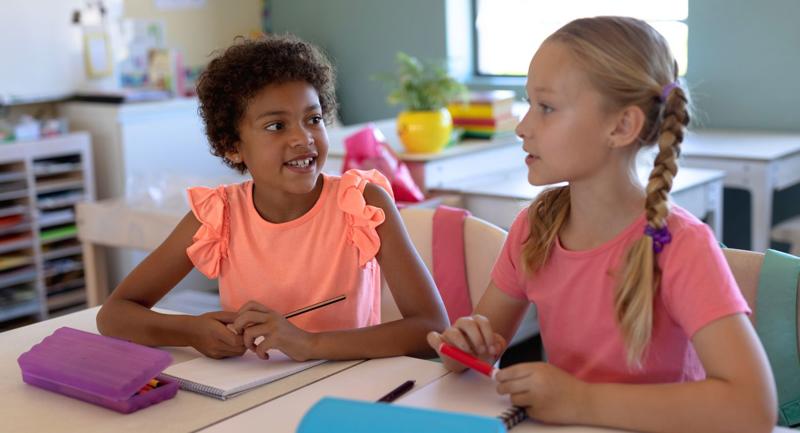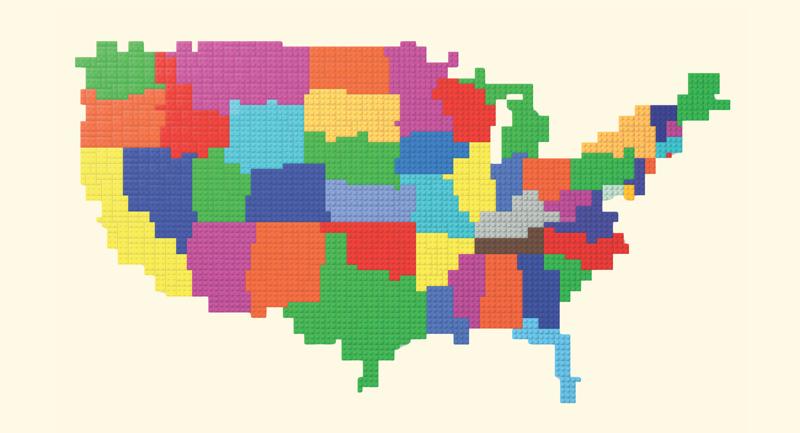Success in the modern world demands innovation, complex problem solving, and new ways of understanding: it requires creativity. Leaders in nearly every profession list creativity as the most valuable asset in their field, but also complain about the lack of creativity in America's young workforce.
As Ashley Merryman, coauthor of NurtureShock: New Thinking About Children, told Education Week, "There is evidence of a decline in creativity in the United States—particularly for children. … [K]ids have fewer creative responses than they had 20 years ago. Their ideas are less original and have less detail. Young children's ability to elaborate has plummeted 37 percent since 1998." In response, states including California and Massachusetts have developed creativity and innovation education indexes to measure how schools are fostering creativity, and the education community has contributed innovative pedagogy on the importance of creativity.
Misunderstood Potential
"Creative" is often the adjective that teachers assign to students who seem daydreamy, distracted, or disruptive: traditionally negative attributes in the classroom. Yet, studies consistently show that daydreamers score higher on tests of creativity and distracted students are seven times more likely to be "eminent creative achievers," according to researchers Shelley Carson, Jordan Peterson, and Kathleen Smith.
Even when "creative" is not used as a negative signifier by teachers, it remains a challenging concept. According to Susan Brookhart, author of How to Assess Higher-Order Thinking Skills in Your Classroom (ASCD, 2010), "Many teachers want their students to be creative but are not entirely sure what to look for. Too often, creativity ends up meaning the report cover was nicely colored or something like that."
So What Is Creativity?
One of the trickiest aspects of successfully integrating creativity into one's teaching is defining it in practical terms. Thomas Crowley, who teaches at San Diego's Francis Parker School, says, "Creativity is a process of problem solving that leads to the aesthetic. Creative thinking is the ability to innovate pre-existing ideas and understandings in a novel, sometimes inventive, way."
Anthony Cody, a longtime Oakland, Calif., science teacher and consultant, adds, "Creative thinking is when, rather than simply following directions, we think for ourselves and come up with new ways to look at problems. It means we are bringing our personal insights and experiences to bear, and actively investigating, rather than just following predetermined steps. It means using ideas or metaphors from other disciplines and thinking about things in new ways."
Although a surprising number of teachers believe that creativity is innate, "the good news," Merryman notes, "is that creativity is a skill that can be taught."
Encouraging Creativity in the Classroom
There are innumerable ways to create new and vibrant understandings for students through creative activities and approaches to subject matter. Among them:
- Brainstorming, in any subject. The purpose of brainstorming is to generate ideas, not judge them.
- Changing the environment. Setting up space for exploration in the classroom—whether through manipulatives centers, discussion corners, drama stages, or art tables—promotes creativity and revives tired minds.
- Exposing students to new cultures. This not only broadens students' perspectives, but it also shows them that there is more than one way to approach a situation and find solutions.
- Thinking visually. Organizing, interpreting, and synthesizing knowledge visually helps students see connections and process ideas in new ways.
- Encouraging creative synthesis in project-based learning. As an example, after Crowley teaches his students about 20th century warfare and shares examples of artistic responses to war, he asks them to produce an art piece, in any medium, that addresses one of the major themes of modern war. In addition to demonstrating their critical understanding of historical conflicts, the project requires the students to explore their own perspective (students can memorialize, glorify, or criticize warfare) creatively. Projects are accompanied by artistic statements that explain their intent and process, and the students view and critique one another's work in a culminating gallery event.
- Using technology. There are many apps (photo editing, sketching, painting, etc.) that encourage the kind of divergent thinking skills that creative learners need to assemble information differently.
- Drawing connections. Free yourself from rigid subject-matter borders and encourage students to forge unexpected connections. Shawn Cornally, instructor at Solon High School and The Big Ideas School in Iowa, describes this in action. "It's like a student who thinks to use a mathematical n-gram statistic to compare works of Shakespeare for uses of a specific kind of irony."
Assessing (Without Oppressing) Creativity
Because creativity itself is so often misunderstood, it's no surprise that the idea of assessing creativity is controversial. Cody cautions, "As teachers, we can create an environment where students feel able to explore and take chances with their thinking, but part of that environment is an invitation we offer, a space we make, that allows students to take risks. If we start applying high stakes to the level of creativity that students exhibit, we might get students attempting to read our minds about what we are looking for and then imitating whatever they think that is. We [should] assess creativity in a broad way, because as soon as you attempt to describe it with any precision, you have trapped the butterfly under glass and killed it."
To effectively approach, but not kill, this "creativity butterfly," teachers can provide specific, yet open-ended, criteria. A rubric that assesses attention to creative thinking, and instructional activities that model and scaffold how students might apply creative thinking in assignments, provides the structure to allow for this. Brookhart designed the rubric below to give students feedback on their application of creative thinking skills in an assignment.
By examining ideas about creativity, broadening perspectives, and implementing innovative assessment measures, the modern educator can foster the creative minds the world needs. As Brookhart suggests, "Creativity is a human skill, and the advancement of civilization depends on it."
Rubric for Creativity
The Creativity Imperative - table
Very Creative | Creative | Ordinary/Routine | Imitative | |
|---|---|---|---|---|
| Variety of ideas and contexts | Ideas represent a startling variety of important concepts from different contexts or disciplines. | Ideas represent important concepts from different contexts or disciplines. | Ideas represent important concepts from the same or similar contexts or disciplines. | Ideas do not represent important concepts. |
| Variety of sources | Created product draws on a wide variety of sources, including different texts, media, resource persons, or personal experiences. | Created product draws on a variety of sources, including different texts, media, resource persons, or personal experiences. | Created product draws on a limited set of sources and media. | Created product draws on only one source or on sources that are not trustworthy or appropriate. |
| Combining ideas | Ideas are combined in original and surprising ways to solve a problem, address an issue, or make something new. | Ideas are combined in original ways to solve a problem, address an issue, or make something new. | Ideas are combined in ways that are derived from the thinking of others (for example, of the authors in sources consulted). | Ideas are copied or restated from the sources consulted. |
| Communicating something new | Created product is interesting, new, or helpful, making an original contribution that includes identifying a previously unknown problem, issue, or purpose. | Created product is interesting, new, or helpful, making an original contribution for its intended purpose (for example, solving a problem or addressing an issue). | Created product serves its intended purpose (for example, solving a problem or addressing an issue). | Created product does not serve its intended purpose (for example, solving a problem or addressing an issue). |
Source: From How to Create and Use Rubrics for Formative Assessment and Grading (p. 54), by Susan M. Brookhart, 2013, Alexandria, VA: ASCD. Copyright 2013 by ASCD. Adapted with permission.








